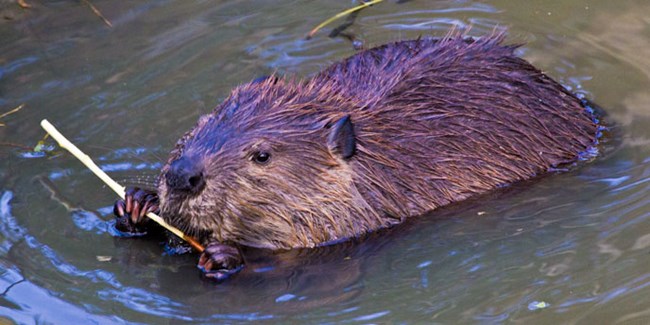Last updated: September 13, 2024
Article
Beaver Occupancy in Rocky Mountain National Park
Where do beaver live in Rocky Mountain National Park? Researchers at Colorado State University conduct occupancy surveys to answer this question.

NPS Photo
Signs of Beaver Occupancy and Activity
Current knowledge of the park’s beaver populations is limited to a handful of locations. To increase this understanding, researchers from Colorado State University are surveying the main tributaries of the Colorado River for signs of current and historic beaver activity in the Kawuneeche Valley. These occupancy surveys can help managers understand the density and distribution of both current and historic beaver populations. Signs of beaver activity include chewed stems, lodges, active and historic dams, and food caches.

NPS Photo. Food cache photo courtesy of J. Sueltenfuss
Habitat Quality Assessment
Throughout the Kawuneeche Valley, the research team also documents vegetation characteristics and browse to assess the quality of beaver habitat there. Vegetation characteristics include type and proportion of shrubs present (willow, alder, and/or birch), shrub height and canopy cover, and shrub health. The amount and type of browse by beaver, elk, and moose are also documented. By comparing habitat quality data for areas with past, present, and no beaver activity, researchers may be able to predict conditions that do or do not support beaver occupancy. This information can be used by managers to inform the type and location of different wetland restoration strategies.
Funding for this research comes from the Rocky Mountain Conservancy. Their support makes projects like this possible.
